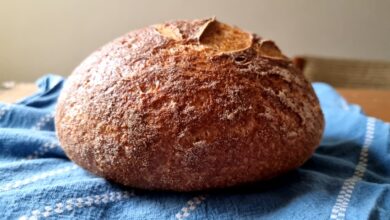Best Sites For Free Textbooks

College and even high school textbooks can cost a fortune these days! It feels like every semester, you’re shelling out hundreds of dollars just to get the books you need for your classes. Luckily, there are some awesome websites where you can find textbooks for free (or at least a whole lot cheaper!). I’ve been there myself, so I know how important it is to save money where you can.
Legitimate Options for Free Textbooks
It’s important to remember that getting textbooks for free shouldn’t involve breaking the law. Pirating textbooks is illegal and can get you into serious trouble. Plus, it’s not fair to the authors and publishers who work hard to create these educational resources. So, let’s focus on the legitimate ways to snag those free textbooks.
Open Educational Resources (OER) Repositories
OER are teaching and learning materials that are free for anyone to use. They’re often created by professors and educational institutions and are licensed in a way that allows you to use, share, and even adapt them. Think of it like free, high-quality learning tools created to share knowledge widely! Here are some great places to look:
- OpenStax: This is a fantastic resource from Rice University. They offer high-quality, peer-reviewed textbooks for many college courses, especially introductory ones. You can download them as PDFs or even order a low-cost print version.
- OER Commons: This is a huge digital library of open educational resources. You can search by subject, education level, and material type.
- MERLOT (Multimedia Educational Resource for Learning and Online Teaching): Another great place to find OER materials, including textbooks, simulations, and other learning resources.
These OER platforms are a really good starting point to find books, and they are always 100% legal.
Your College Library
Don’t forget the most obvious resource: your college library! Many libraries have copies of textbooks that you can borrow for a limited time. Sometimes, they even have electronic versions that you can access online. It’s always worth checking your library’s catalog to see what’s available. You might not be able to keep the book forever, but borrowing it for a few hours to do your reading or complete assignments can save you a ton of money.
Project Gutenberg
Project Gutenberg is a volunteer effort to digitize and archive cultural works, offering them for free. While it’s not specifically for textbooks, you can find many classic literature texts and historical documents that might be required for some of your classes. For example, if you’re taking a literature class that requires you to read “Pride and Prejudice” or “Frankenstein,” you can find those books for free on Project Gutenberg.
Internet Archive
The Internet Archive is another treasure trove of free books, including some textbooks. It’s a non-profit digital library with the mission of providing “universal access to all knowledge.” You can borrow books from the Internet Archive’s lending library for a certain period of time. They have a vast collection of digitized books, so it’s definitely worth searching for your textbooks there.
Smart Strategies for Finding Free or Low-Cost Textbooks
Even if you can’t find a completely free textbook, there are still ways to save money. Here are a few tips:
- Talk to your professor: Ask your professor if an older edition of the textbook is acceptable. Often, the content doesn’t change much from one edition to the next, and you can save a lot of money by buying an older version.
- Share with a classmate: If you have a friend in the same class, consider sharing a textbook. You can split the cost and take turns using it.
- Check online forums and groups: Many colleges have online forums or Facebook groups where students buy and sell used textbooks. This can be a great way to find textbooks at a discounted price.
Safety Tips for Online Textbook Resources
When you’re searching for free textbooks online, it’s important to be careful and protect yourself from scams and malware. Here are a few safety tips:
- Only download from reputable websites: Stick to well-known and trusted websites like OpenStax, OER Commons, and Project Gutenberg. Avoid downloading from unfamiliar or suspicious websites.
- Be wary of websites that ask for personal information: Never give out your credit card information or social security number on a website that you don’t trust.
- Use a virus scanner: Make sure your computer has a virus scanner installed and that it’s up to date. This will help protect you from malware.
- Read reviews: Check reviews of the website or resource before downloading anything. See what other users have to say about their experience.
The Benefits (and Concerns) of Free Textbooks
Using free textbooks has many benefits, including saving money, increasing access to education, and promoting open educational resources. However, there are also some potential concerns to consider.
One concern is that the quality of free textbooks may not always be as high as that of traditional textbooks. However, many OER textbooks are peer-reviewed and written by experts in their fields, so this isn’t always the case. Another concern is that free textbooks may not be available for all subjects or courses.
Overall, the benefits of using free textbooks outweigh the concerns. By using free textbooks, you can save money, access high-quality educational resources, and support the open education movement.
Frequently Asked Questions (FAQ)
Are free textbooks legal?
Yes, as long as you’re getting them from legitimate sources like OpenStax, OER Commons, Project Gutenberg, and the Internet Archive. Avoid downloading textbooks from pirate websites, as this is illegal and unethical.
Will my professor accept a free textbook?
It depends on the professor and the textbook. If you’re using an OER textbook that covers the same material as the required textbook, most professors will likely be okay with it. It’s always a good idea to check with your professor beforehand to make sure.
Are free textbooks always up to date?
Not always. OER textbooks are often updated regularly, but it’s important to check the publication date to make sure you’re using the most current version. If you’re using an older edition, make sure you’re aware of any changes or updates that have been made.
What if I can’t find a free textbook for my class?
If you can’t find a free textbook, consider renting a textbook, buying a used textbook, or sharing a textbook with a classmate. You can also ask your professor if an older edition of the textbook is acceptable.
Finding free textbooks may take a little effort, but it’s definitely worth it! By using the resources and strategies I’ve shared, you can save a lot of money on your education. So, ditch those expensive textbooks and start exploring the world of free learning resources today!
Related Posts
| Best Free Textbook Sites |
| Best Websites For Free Textbooks |
| Best Website For Free Textbooks |
| Best Free Textbook Websites |



